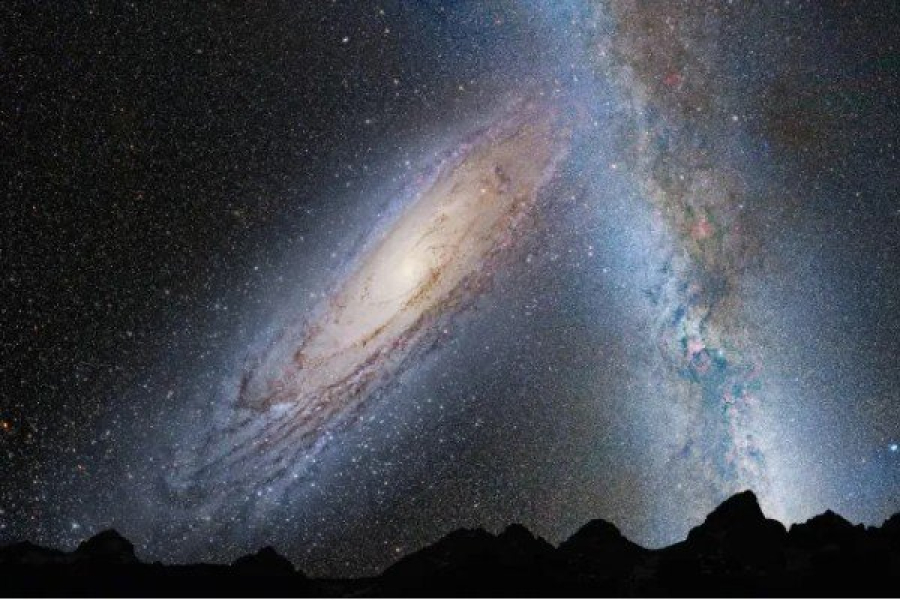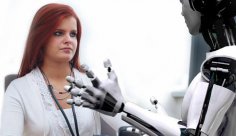
A new study from Europe published on Monday challenges the widely held belief that the Milky Way and Andromeda galaxies are heading for a collision that could destroy our galaxy and solar system.
Scientists from the Universities of Helsinki, Durham and Toulouse, who published their findings in the journal Nature Astronomy, found that despite the two galaxies approaching each other at an impressive speed of more than 223,600 miles per hour, there is only a 2% chance of them colliding within the next 5 billion years.
The results of 100,000 simulations, based on new observational data including the influence of the Large Magellanic Cloud on the Milky Way and controls for possible misinterpretations, challenge the previously held view that the Milky Way has no more than 5 billion years left, as mentioned in a press release from Durham University.
The Milky Way and Andromeda come close at least once, passing within 500,000 light years of each other in just over half of the simulations before losing enough orbital momentum to collide.
However, this is not expected to happen for at least 8 to 10 billion years, which is well after the time when our Sun will have exhausted its supply anyway.
In most other scenarios considered in the study, the distances between the Milky Way and Andromeda are so great that they continue to evolve in the silence of time, undisturbed.
However, the findings do not indicate that the calculations on which the previous findings were based were incorrect, said lead author Till Savala, but rather indicate that more recent data has become available to the team.
New data collected by NASA's Hubble and European Space Agency's Gaia space telescopes have allowed scientists to include more variables in their models.
“When we started with the same assumptions as previous researchers, we got similar results. We were simply able to explore a much larger space of possibilities thanks to the new data,” said Savala, a researcher in the Theoretical Extragalactic Astrophysics Group at the University of Helsinki.
“While some earlier studies focused on the interactions between the Milky Way, Andromeda and the Triangulum Galaxy, we also consider the influence of the Large Magellanic Cloud.
“Although its mass is only about 15% that of the Milky Way, its gravitational pull perpendicular to its orbit with Andromeda is strong enough to significantly reduce the likelihood of a merger with the Andromeda galaxy,” Savala added.
“And while earlier studies only looked at the most likely values for each variable, we ran a lot of simulations, which allowed us to account for all the uncertainties in the observations.”
Professor Alice Deason, from Durham University's Institute of Computational Cosmology, said the findings were important “for the fate of our galaxy” because there was a chance the destined merger with Andromeda to form the giant Milkomeda might never happen.
The team plans to expand their research as more data becomes available and work out additional scenarios to map the future of galaxies.
Precise measurements from Gaia are expected any day now on some of the most significant but well-known difficulties in measuring variables, including Andromeda's sideways motion.
Professor Carlos Frenk of Durham, the project's lead cosmologist, said the Universe was “a dynamic space that is constantly changing”.
“We often see external galaxies colliding and merging with others, sometimes creating a kind of cosmic fireworks display as gas ejected into the center of the merger remnant feeds the central black hole, radiating enormous amounts of energy before finally collapsing into the hole,” Frenk said.
“We previously thought that this was the fate that awaited our Milky Way galaxy. Now we know that there is a very high probability that we will avoid this terrible fate.”
Frank added that the ability to accurately model how huge galaxies containing hundreds of billions of stars will evolve over billions of years demonstrates what can be expected in the field.
“This is a testament to the power of physics combined with the might of modern supercomputers,” he concluded.
Sourse: www.upi.com





